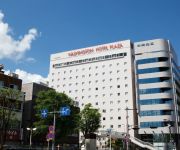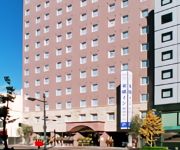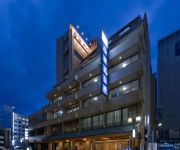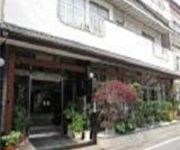Safety Score: 2,8 of 5.0 based on data from 9 authorites. Meaning we advice caution when travelling to Japan.
Travel warnings are updated daily. Source: Travel Warning Japan. Last Update: 2024-08-13 08:21:03
Delve into Kasuga
The district Kasuga of in Itano-gun (Tokushima) is a district located in Japan about 313 mi west of Tokyo, the country's capital town.
In need of a room? We compiled a list of available hotels close to the map centre further down the page.
Since you are here already, you might want to pay a visit to some of the following locations: Tokushima, Narutocho-mitsuishi, Komatsushimacho, Higashikagawa and Awa. To further explore this place, just scroll down and browse the available info.
Local weather forecast
Todays Local Weather Conditions & Forecast: 12°C / 54 °F
| Morning Temperature | 9°C / 48 °F |
| Evening Temperature | 11°C / 52 °F |
| Night Temperature | 10°C / 51 °F |
| Chance of rainfall | 0% |
| Air Humidity | 58% |
| Air Pressure | 1027 hPa |
| Wind Speed | Moderate breeze with 10 km/h (6 mph) from South-East |
| Cloud Conditions | Scattered clouds, covering 43% of sky |
| General Conditions | Light rain |
Monday, 25th of November 2024
14°C (56 °F)
12°C (54 °F)
Scattered clouds, gentle breeze.
Tuesday, 26th of November 2024
18°C (65 °F)
13°C (55 °F)
Heavy intensity rain, strong breeze, overcast clouds.
Wednesday, 27th of November 2024
15°C (59 °F)
11°C (52 °F)
Light rain, fresh breeze, broken clouds.
Hotels and Places to Stay
JR Hotel Clement Tokushima
Tokushima Washington Hotel Plaza
Toyoko Inn Tokushima Ekimae
Toyoko Inn Tokushima-eki Bizan-guchi
Hotel Grand Palace Tokushima
Awa Kanko Hotel
Daiwa Roynet Hotel Tokushima-Ekimae
Subaru Yado Yoshino (RYOKAN) Awa no Kuni
Hotel Astoria (Tokushima)
(RYOKAN) Hayashi Annex
Videos from this area
These are videos related to the place based on their proximity to this place.
VANCE&HINES OUTLAW INDY + THUNDER MAX (2008 FXDL)
08ローライダーにバンス&ハインズ(アウトローインディ)とサンダーマックス(850rpm)のセッティングです。
Tokushima: The Sacred Temples (23) - Temple No.17 Idoji
This series of video clips were made by the students who studied Intercultural Communication Studies under the Faculty of Integrated Arts and Scieices, the University of Tokushima in Japan....
第十樋門(その3) Yoshino Daiju sluice gates #3 (Kamiita,Tokushima,Japan)
徳島県の上板町にある第十樋門を撮影しました(その3)。この樋門はコンクリート構造で、1923(大正12)年3月、旧吉野川と吉野川の分流点に設...
第十樋門(その1) Yoshino Daiju sluice gates #1 (Kamiita,Tokushima,Japan)
徳島県の上板町にある第十樋門を撮影しました(その1)。この樋門はコンクリート構造で、1923(大正12)年3月、旧吉野川と吉野川の分流点に設...
Videos provided by Youtube are under the copyright of their owners.
Attractions and noteworthy things
Distances are based on the centre of the city/town and sightseeing location. This list contains brief abstracts about monuments, holiday activities, national parcs, museums, organisations and more from the area as well as interesting facts about the region itself. Where available, you'll find the corresponding homepage. Otherwise the related wikipedia article.
Itano District, Tokushima
Itano District, Tokushima is a district located in Tokushima, Japan. As of 2003, the district has an estimated population of 111,196 and a density of 622.04 persons per km². The total area is 178.76 km². Matsushige is home to Tokushima Airport.
Kō Station (Tokushima)
Kō Station is a railway station on the Tokushima Line of Shikoku Railway Company located in Tokushima, Tokushima Prefecture, Japan. The station opened on February 16, 1899.
Tokushima College of Technology
Tokushima College of Technology is a private university at Itano, Tokushima, Japan, founded in 1973.
Ōasahiko Shrine
Ōasahiko Shrine is a Shinto shrine located at the base of Mt. Ōasa in Naruto, Tokushima, Japan. The kami enshrined there are Ōasahiko-no-Okami and Sarutahiko-no-Okami.
Mount Bizan
is a mountain in Tokushima. Its name is formed of the kanji for eyebrow, and it is said to have earned this name because the mountain looks like an eyebrow from all views. Known as a symbol of Tokushima City, the name Mount Bizan appears in many school songs in the city district, such as the Tokushima Prefectural Jonan High School, Tokushima Municipal High School and many more.
Bandō prisoner-of-war camp
The Bandō POW camp was a prisoner-of-war camp during World War I in what is now Naruto, Tokushima Prefecture, Japan. From April 1917 to January 1920, just under a thousand of the three thousand nine hundred German soldiers captured at Tsingtao in November 1914 were imprisoned at the camp. When the camp closed in 1920, sixty-three of the prisoners chose to remain in Japan.
Kuramoto Station (Tokushima)
Kuramoto Station is a train station in Tokushima, Tokushima Prefecture, Japan.
Akui Station
Akui Station is a train station in Tokushima, Tokushima Prefecture, Japan.
Yoshinari Station
Yoshinari Station is a train station in Tokushima, Tokushima Prefecture, Japan.
Shōzui Station
Shōzui Station is a train station in Aizumi, Itano District, Tokushima Prefecture, Japan.
Ikenotani Station
Ikenotani Station is a train station in Naruto, Tokushima Prefecture, Japan.
Bandō Station
Bandō Station is a train station in Naruto, Tokushima Prefecture, Japan.
Awa-Kawabata Station
Awa-Kawabata Station is a train station in Itano, Itano District, Tokushima Prefecture, Japan.
Itano Station
Itano Station is a train station in Itano, Itano District, Tokushima Prefecture, Japan.
Awa-Ōmiya Station
Awa-Ōmiya Station is a train station in Itano, Itano District, Tokushima Prefecture, Japan.
Awa-Ōtani Station
Awa-Ōtani Station is a train station in Naruto, Tokushima Prefecture, Japan.
Tatsumichi Station
Tatsumichi Station is a train station in Naruto, Tokushima Prefecture, Japan.
Shikoku Saburo Bridge
Shikoku Saburo Bridge is a bridge in Tokushima Prefecture, Shikoku that spans the Yoshino River. It joins Ojin-cho on the north of the river to Fudouhigashi-cho on the south of the river. The Bridge is 910.5 metres in length and 14 metres in width, with a two-lane highway running atop. The bridge was opened to the public in 1998. The name is taken from the Saburo name, which is a popular name for third born sons in Japan.
Ryōzen-ji (Naruto)
is a Kōya-san Shingon temple in Naruto, Tokushima Prefecture, Japan. Temple 1 of the Shikoku 88 temple pilgrimage, the main image is of Shaka Nyorai. Said to have been founded by Gyōki during the Tempyō era, its buildings are more recent replacements after damage by fires. Located close to the crossing point for pilgrims from the Kansai region, Yūben Shinnen identified the temple as No.1 in his Shikoku henro michishirube of 1687 and subsequent guidebooks followed suit.
Gokuraku-ji (Naruto)
Gokuraku-ji is a Kōya-san Shingon temple in Naruto, Tokushima Prefecture, Japan. Temple 2 of the Shikoku 88 temple pilgrimage, the main image is of Amida Nyorai. The temple is said to have been founded by Gyōki.
Aizen-in (Itano)
Aizen-in is a Kōya-san Shingon temple in Itano, Tokushima Prefecture, Japan. The temple is said to have been founded by Kōbō Daishi in 815, who also carved the main image of Fudō Myōō.
Tōrin-in (Naruto)
, also known as Takamine-Daishi, is a temple in Naruto, Tokushima Prefecture, Japan. It is the oku-no-in of Ryōzen-ji, Temple 1 on the Shikoku 88 temple pilgrimage. Said to have been founded by Gyōki, the main image is of Yakushi Nyorai. It is Temple 1 on the Shinshikoku Mandala Reijō. A Heian period seated wooden statue of Miroku Bosatsu has been designated an Important Cultural Property.
Konsen-ji (Itano)
Konsen-ji is a Kōya-san Shingon temple in Itano, Tokushima Prefecture, Japan. Temple 3 on the Shikoku 88 temple pilgrimage, the main image is of Shaka Nyorai. Said to have been founded by Gyōki, it was rebuilt in the Edo period after being burned by the Chōsokabe.
Dainichi-ji (Itano)
Dainichi-ji is a Tōji Shingon temple in Itano, Tokushima Prefecture, Japan. Temple 4 on the Shikoku 88 temple pilgrimage, the main image is of Dainichi Nyorai. The temple is said to have been founded by Kōbō Daishi, who carved the image.
Jizō-ji (Itano)
Jizō-ji is an Omuro Shingon temple in Itano, Tokushima Prefecture, Japan. Temple 5 on the Shikoku 88 temple pilgrimage, the main image is of Enmei Jizō Bosatsu. The temple is said to have been founded by Kōbō Daishi, who carved the image. The Hondō (1711–16), Daishidō (1711–16), Fudōdō (1751–1830), Kyōgura (1810), and Gohyakurakandō (1922) have all been placed on the cultural properties register.























